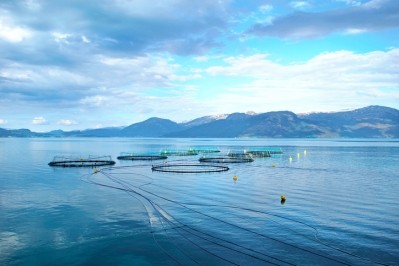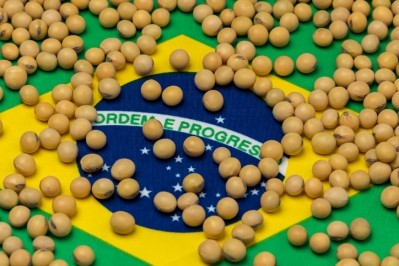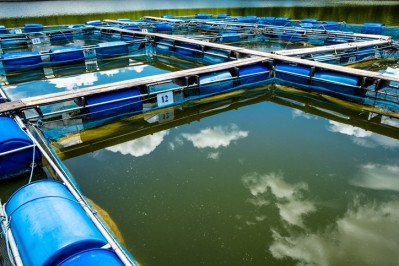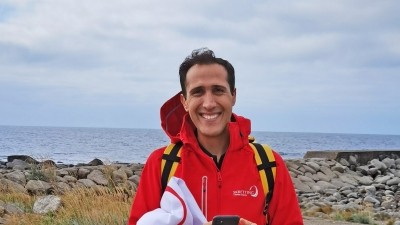Collaboration key to ensuring traceability and responsible best-practice, says Skretting

Skretting’s newly published sustainability report tracks investments, impacts and success stories from 2019.
“This is my second sustainability report since I came on board. I am very proud of it. We have laid the foundations required for taking the next steps, to go forward. While we are happy with what we have done [to date], we have a long way to become the leader or to get to where we want to go [in terms of the sustainability agenda] as our ambitions [in this respect] are very high,” Log Bergjord told FeedNavigator.
Aligned with the company’s determination to innovate, she said Skretting takes great pride in its collaborative endeavors, driving the sustainability agenda through active membership of a number of dynamic multi-stakeholder groups.
The feed manufacturer currently operates 33 plants around the world in 17 countries. These are collectively producing 2.3m tons of feed annually. It says its footprint is always evolving, with new production facilities under construction and closures or plant extensions underway in most regions
Skretting, like most companies, is focused on reducing energy use, carbon dioxide (CO2) emissions, waste and water use across its operations globally.
In 2019, it reported, however, that the energy consumption per ton of feed was 2% higher than in 2018. CO2 emissions increased by 4%, up to 81 kg CO2 e per ton of feed. Water withdrawal increased by 3% to 635 liters per ton of feed, but the waste generation of feed was 8kg per ton, a level that was slightly lower than that of 2018. Skretting said it is confident that investments and changes made in 2019 will result in significant improvements in its overall environmental footprint in 2020.
Logistic efficiencies
A notable sustainability success was the logistics initiative it began last year with Cargill to transport the two companies’ Norwegian feed products on the same vessels instead of separately. As well as decreasing shipping traffic and costs, this move has cut the greenhouse gas emissions associated with the transportation of fish feed by one-fifth, said the company
The two feed players believe that over time, the collaboration will create greater efficiencies in transportation and increase the service levels for Norwegian salmon farmers.
Skretting sustainability manager, Trygve Berg Lea, told us:
“It is a project that is well suited to Norway where there is a long coastline, and where we have traditionally operated all our feed freight via shipping. The initiative fits very well with the ambitions today of companies and authorities in terms of reducing carbon footprint. Why run two boats parallel when one boat is able to handle this more efficiently? I also believe that, in the long run, there are economic benefits from this [kind of operation], and the economy box is another that needs to be ticked to have sustainable solutions.”
Tackling gender imbalance
With only 17.6% female representation in its workforce, Skretting’s sustainability report indicated gender inclusion was another sustainability linked goal for 2020.
“There is a low percentage of women and is its partly industry related but, in fact, in leadership and senior positions, we are progressing well – 25% of those roles in Skretting are represented by women. We are setting ambitious targets to improve those levels over the next few years. I believe starting from the top is something we have to do. We will get the female share of leadership roles in Skretting up to 30% in the next few years,” said Log Bergjord.
Sustainability audits
In 2019, the company said it included sustainability in 75% of its global supplier audits and that it has set the target of reaching 100% in 2020. There is an extra focus on countries and ingredients that have been identified as ‘high risk’.
“In 2019, we did not have any major non-conformities,” said Berg Lea.
Combining sustainability audits brings greater efficiencies but such an approach might not track all violations of its supplier sustainability requirements, he acknowledged.
An ambition he has, as a sustainability manager, is to ensure state of the art supplier sustainability risk analysis tools are at the team’s disposal: “Risk assessments are a challenge as sustainability covers so many areas including social issues such as labor and human rights. In effect, we need to learn by doing,” commented said Berg Lea.
Preservation of the Cerrado
Skretting, together with Nutreco, signed the Statement of Support to the Cerrado and last year was one of three companies, along with UK retailer, Tesco, and Norwegian company, Grieg Seafood, to commit funding to the International Fund for Cerrado, a fund to reward farmers who can preserve native vegetation on their soy farms in the Cerrado region.
The idea of setting up such a fund had long been a point of discussion among industry stakeholders and international actors.
This mechanism, however, has faced obstacles due to “political sensitivities” in Brazil, said Berg Lea.
“Abiove, the Brazilian soy producer association, withdrew from the initiative. It had been playing a very central role in setting up the scheme, potentially establishing an organization, administering it and following up on the funding. But there is a lot of work and discussions going on to get this Cerrado conservation mechanism back on track, and to get Abiove back to the table, as I understand it.”
The Brazilian soy processing industry evidently needs to be engaged to further the development of responsible soy production, he stressed.
Joining forces
Meanwhile, in another project, which got underway in 2019, again Brazil focused, Skretting and fellow salmon feed producers Cargill Aqua Nutrition, BioMar and Mowi joined forces with certification organization, ProTerra, and a number of soy protein concentrate (SPC) producers to ensure value chains are able to take a responsible approach to sourcing soy from that market.
Skretting said it is now able to trace the soy used in the SPC it buys back to the community where it was cultivated.
“Prior to that, we had more or less been able to say that the soy we sourced came from Brazil, which of course is a huge country, with 28 states. For many reasons, we wanted more details [on sourcing in relation to] transparency [targets]. We addressed this issue with ProTerra and the SPC suppliers and then, all together, we developed a system to enable us to trace the soy we buy back to the community in Brazil. We can now say with more specificity whether an area has abundant deforestation of whether that is not an issue at all in an area. We are also able to make much more specific and detailed calculations in relation to the carbon footprint of the soy we are sourcing,” explained Berg Lea.
Skretting is a founding member of the sustainable body Seafood Business for Ocean Stewardship initiative (SeaBOS), which represents 10 of the world’s largest seafood companies.
The company’s sustainability report outlines how, this year, a critical undertaking by SeaBOS will be to complete a rapid assessment of how the new ‘GDST Standards and Guidelines for Interoperable Seafood Traceability Systems, Version 1.0’, developed by the Global Dialogue on Seafood Traceability (GDST) and published in March. They will track seafood products from point of origin to point of sale, can be applied to each member’s business.
“This standard allows all industry players to speak the same language, to ensure that we will have more efficient information flow. It will enhance transparency in the whole value chain,” commented Berg Lea.
Ingredient innovation
In 2019, some 27% of fishmeal and fish oil in Skretting originated from trimmings and byproducts, the report revealed.
“It is not unlikely that will climb to 50% in the coming years,” he said.
The majority of these by-products came from wild fisheries, but the company sees an increase in by-products from processing of farmed species like salmon, tilapia and shrimp.
The report also stressed Skretting’s history in terms of supporting the development of novel ingredients like single cell proteins, algae and insect meal, helping leading innovators achieve scalability.
To support the next wave of advancements in the novel ingredient space, the company said it will continue to invest considerable resources into exploring the commercial application of alternative ingredients. This work includes fully understanding their viability from nutritional, sustainability, quality and safety, regulatory and financial perspectives.
Log Bergjord weighed in on this:
“We are continuously looking at non-conventional feedstuffs, there is a lot of work going on in our research and development area in this field, and we see some very interesting prospects. We mature these novel ingredients, and then the question always is about when they will become scalable, when will they become available at a price that is viable for our customers. We are still on that journey and I believe that there will have to be a value chain [strategy], where we approach the market as an industry rather than as a single company. But we are putting quite a lot of resources into this area of novel ingredients, even compared to only a few years ago, we have really stepped it up, because [such innovation] is needed.”















